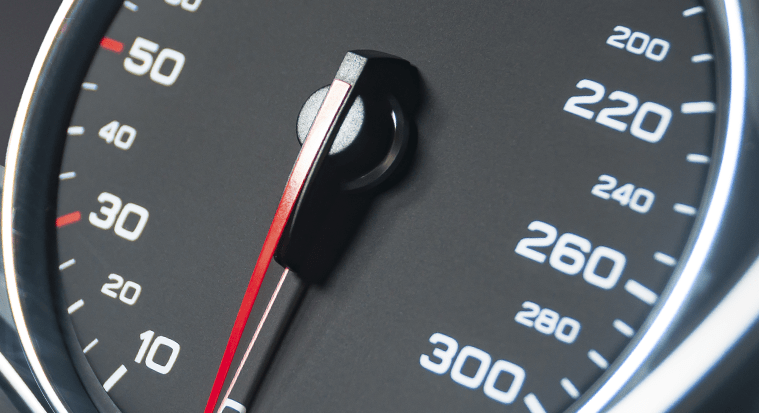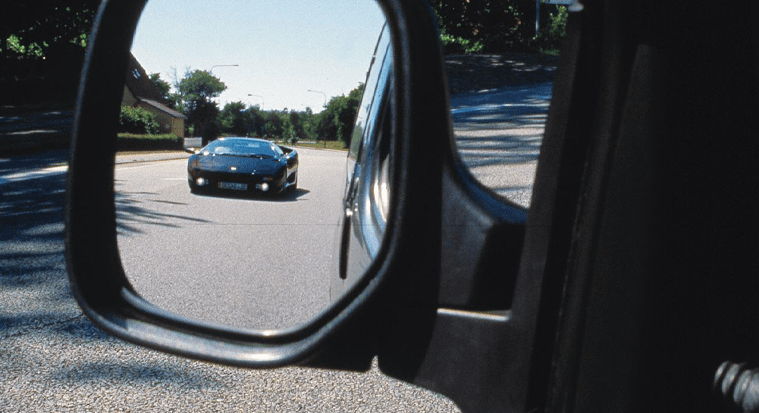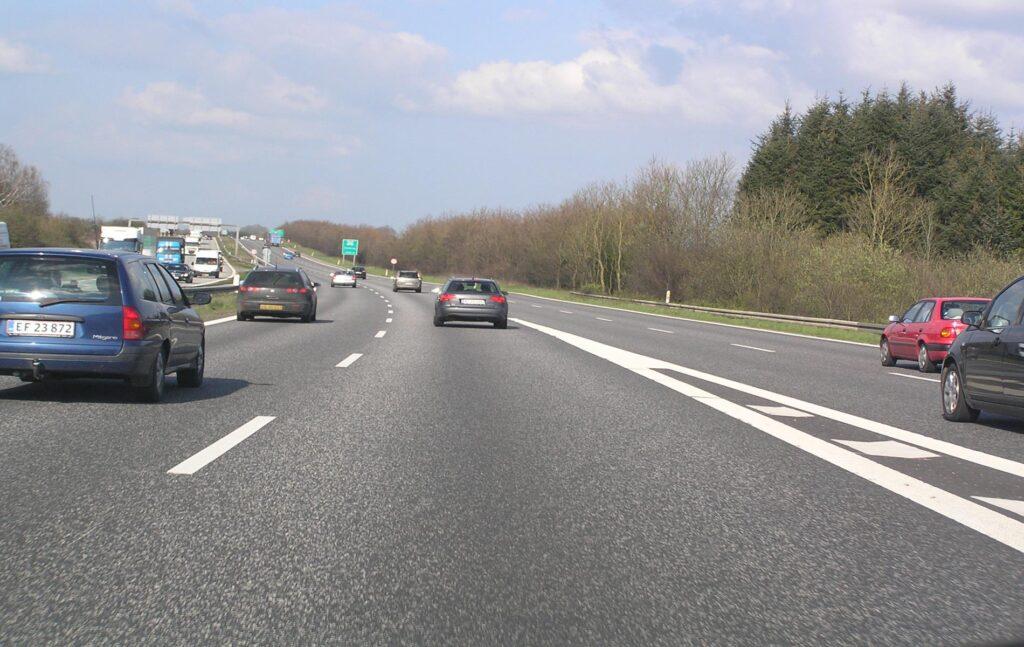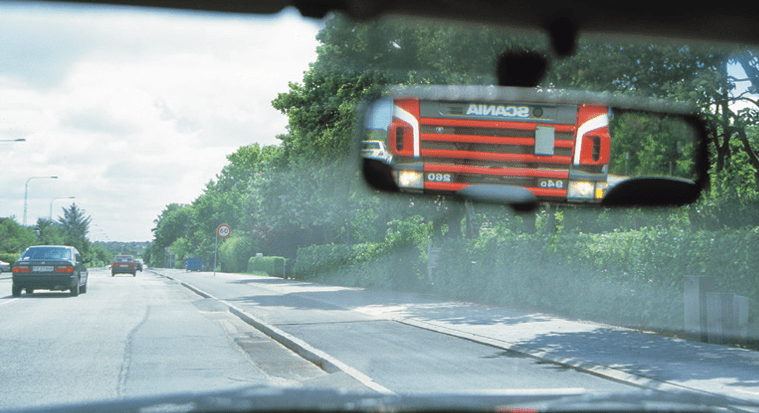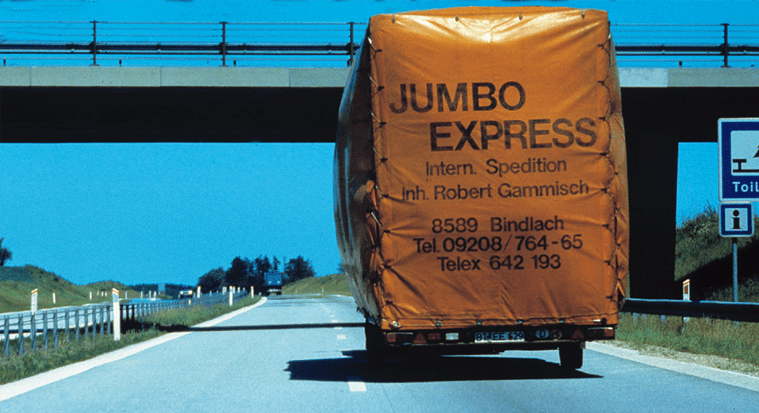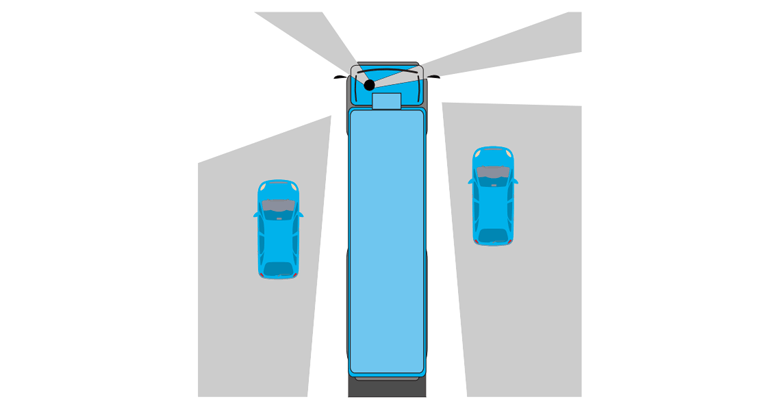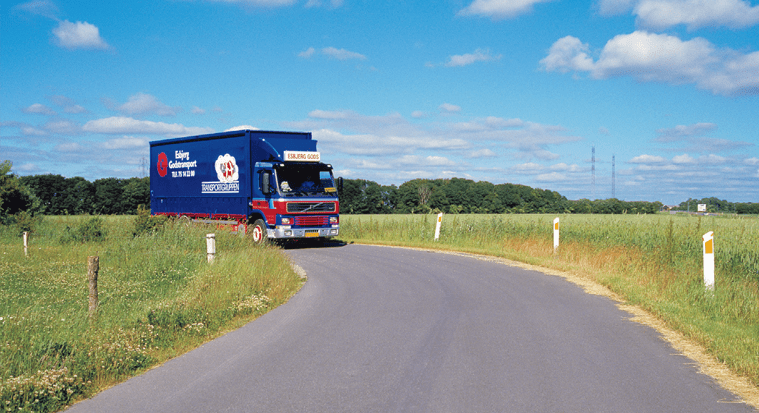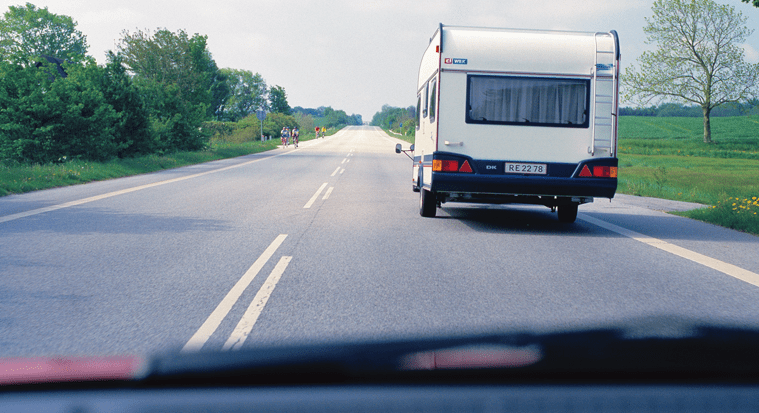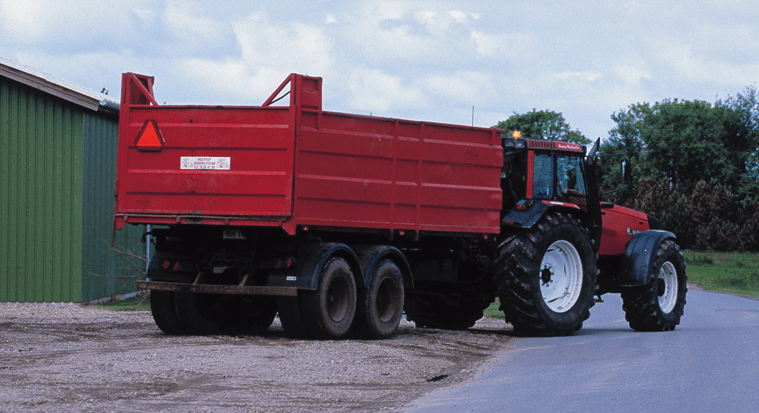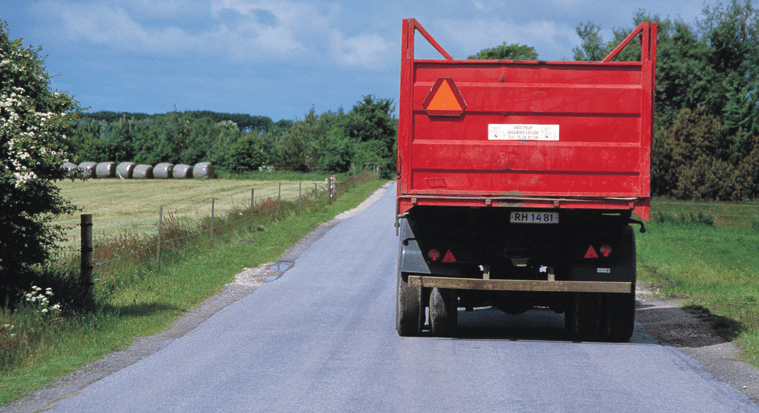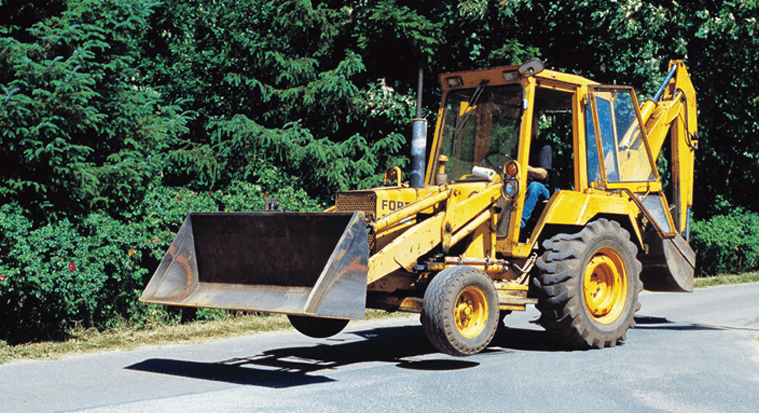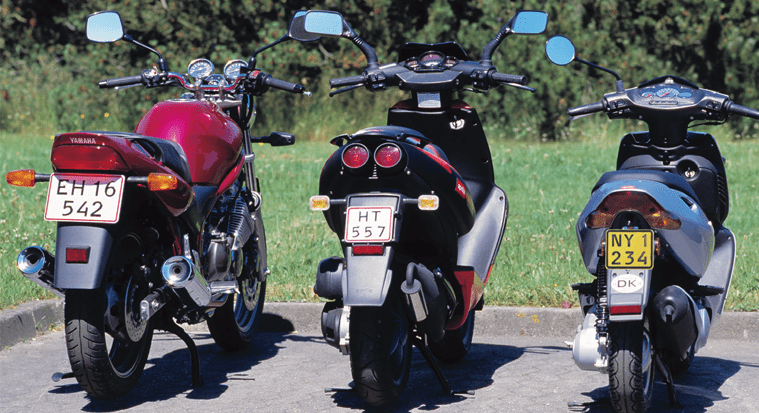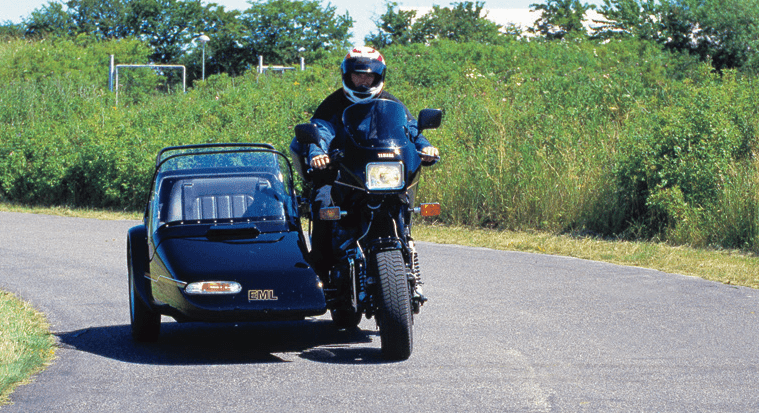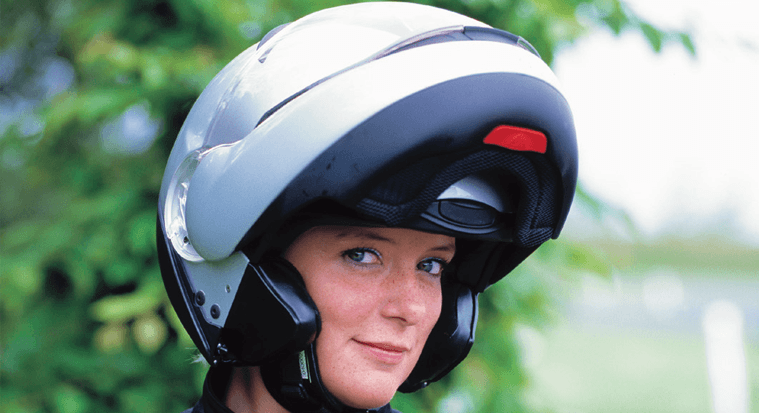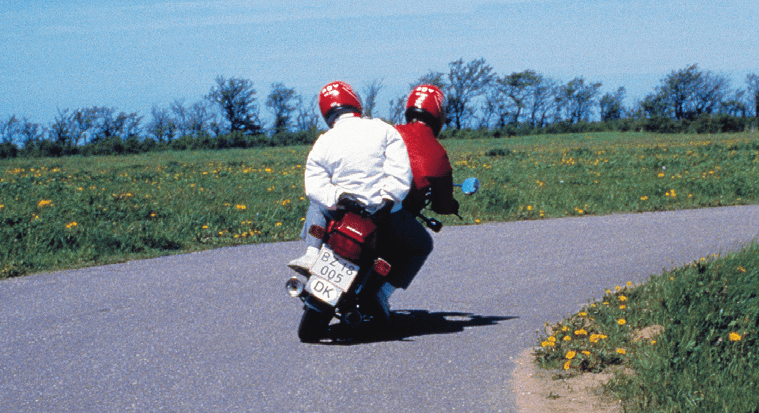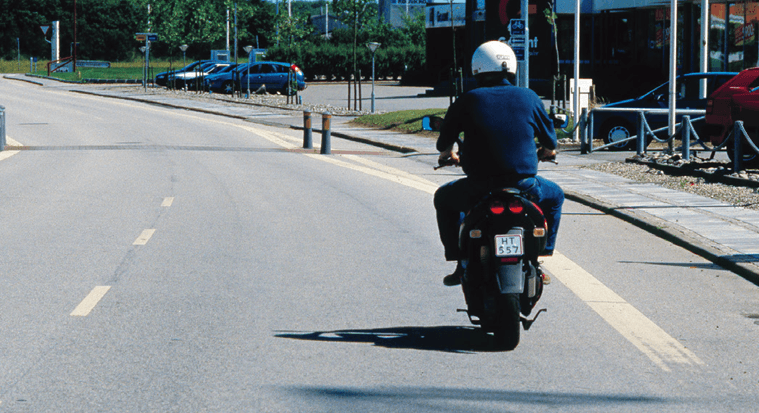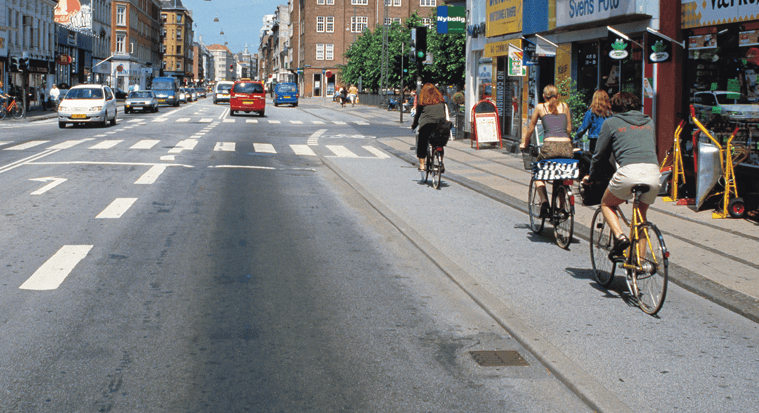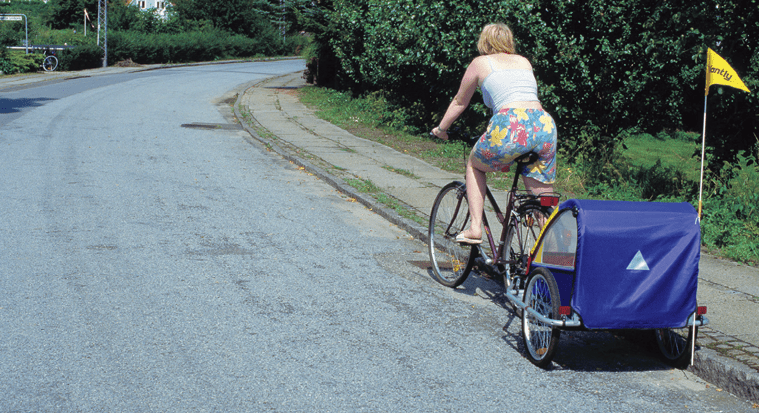Passenger car
Driving school
theory book
to category B
Sections 3.1 - 3.2: Vehicle manoeuvrability
Learn how to judge other vehicles
As a driver, you don't just need to know what it means to drive a car. You also need to understand how other vehicles "behave". This way, you can be anticipatory and considerate in traffic and help prevent serious accidents.
Section three is special because it prepares you for both the theory test and the driving test. This section emphasises the potential hazards you will encounter with other vehicles. You need to be able to recognise, assess and react appropriately to these hazards. In other words, this section is designed to make you aware of some typical potential hazards that you need to learn to recognise and deal with both in theory lessons and in practice.
You need to understand the manoeuvrability of other vehicles and some of the difficulties they typically face. That is, you need to know something about their speed and steering characteristics, but also about the orientation conditions drivers of these vehicles face.
These conditions can contribute to accidents, so it's important that your instructor explains the typical danger signs to you, both in theory and during your driving lessons.
Speed characteristics
Speed characteristics A vehicle's speed characteristics depend on acceleration, top speed and braking ability, among other things.
- Acceleration capability tells you how quickly a vehicle picks up speed. Acceleration capability depends on the size of the engine in relation to the weight of the vehicle. For example, a truck travelling without a load can accelerate almost as fast as a passenger car.
- The top speed tells you the maximum speed a vehicle can go.
- Braking performance tells you how quickly you can slow down again.
Steering behaviour
Steering behaviour depends on steering response, directional stability and crosswind sensitivity, among other things. A vehicle with more weight on the rear axle tends to have more steering behaviour, more crosswind sensitivity and less directional stability. In addition, a vehicle with more weight on the rear axle tends to oversteer. A vehicle with the most weight on the front axle is less willing to steer, less sensitive to crosswinds and more directionally stable. In addition, a vehicle with the most weight on the front axle tends to understeer.
- Steerability indicates how quickly the vehicle reacts when the steering wheel or handlebar is turned.
- Directional stability tells you how well the vehicle stays on course when travelling in a straight line.
- Crosswind sensitivity depends on how easily the vehicle is affected by crosswinds.
Passenger cars and vans
Speed characteristics
- Cars and vans are among the fastest vehicles in terms of acceleration and top speed.
- Of all vehicles, they have the best braking performance.
- However, the acceleration performance of individual cars and vans varies greatly. You should pay particular attention to this when overtaking or starting from a roadside. But it's also important when choosing a lane, for example at an intersection.
Steering behaviour
There is little difference between the steering behaviour of cars and vans. However, directional stability and crosswind sensitivity can vary depending on the body structure and vehicle loading.
Orientation terms
- On some cars, the front window pillars are wide enough to hide a crossing car from about 100 metres away.
- On all cars, the rear window frames form blind spots to both the right and left. They can completely hide a road user travelling close behind.
- The side mirrors can't reveal what's in the blind spots at the rear.
- Vans without a rear window and/or with blinded side windows make it even more difficult for you to orientate yourself.
- Dirt, dew, ice, snow or posters on your windows seriously impair your visibility.
Trucks, including buses
Speed characteristics
- Lorries and buses accelerate more slowly than cars. You need to be aware of this, for example, when approaching a lorry or bus from behind that wants to merge or change lanes.
- Also note that due to poor acceleration, lorries often cluster together on country roads. Why you should be careful when overtaking lorries on country roads
- They have a lower top speed.
- In densely populated areas, lorries are allowed to follow local speeds, up to a maximum of 70 km/h.
Steering behaviour
- Trucks are usually very directionally stable and not very sensitive to crosswinds due to their heavy weight and long distance between axles.
- Medium and very large lorries need a lot of space to turn and turn around, for example. And if the lorry has a load that protrudes, even more space is needed. You need to be aware of this if, for example, you are overtaking or passing a lorry that is turning.
Orientation terms
- Lorries have more and larger blind spots than cars. You need to keep this in mind when driving close together in columns or rows, for example. But also before changing lanes, overtaking, crossing or turning.
- The large exterior mirrors can make forward blind spots even larger.
- If a load or crate covers the rear window of the cab, the driver has a poor view to the rear.
- Truck cabins are soundproofed, making it difficult for the driver to hear outside sounds. Be aware of this in traffic.
Cars with a trailer
Speed characteristics
Passenger cars or lorries travelling with a trailer usually don't accelerate very quickly. They also have a lower top speed and often poorer braking performance than cars without a trailer. When it comes to speed behaviour, you need to make the same reservations about cars with trailers as you do about lorries.
Steering behaviour
- Cars with a trailer tend to swerve. That's why you need to be careful when overtaking.
- While trucks generally have good directional stability, it can be compromised when travelling with a trailer.
- Trailers can easily skid and swerve across the carriageway if, for example, the road is slippery or if you brake hard on the way down a hill. You need to be aware of this if, for example, you are overtaking or meeting a car with a trailer.
- A car or van with a trailer or caravan is less directionally stable and more sensitive to crosswinds.
- Cars with trailers need at least as much space for manoeuvring as large trucks.
Orientation terms
You can assume that the driver of a car with a high trailer has no better orientation conditions than the driver of a lorry. Therefore, you should take the same precautions.
Tractors, including motorised implements
Speed characteristics
- Tractors have good acceleration.
- Most tractors only brake on two wheels. Therefore, tractors and tractor-trailer combinations usually have poorer braking performance than other vehicles. In addition, not all tractor trailers need to be equipped with brakes. Pay particular attention to the tractor's poor braking performance when you encounter a tractor that has the right of way.
- If a tractor brakes hard while turning, it can tip over.
- Tractors, especially those with trailers, can easily be mistaken for lorries. In fact, the triangle on the back and the speed are the only things that can tell you if it's a tractor-trailer combination or a lorry driving in front of you. And speed is always difficult to judge.
Tractors have a low top speed. The maximum speed limit for a tractor is 40 km/h, but it can usually go faster. Like any other slow-moving vehicle, it must always be equipped with a red triangle on the rear. You should be aware of the low top speed, for example, when a tractor pulls out from a side road or when overtaking or meeting it on the motorway or in the city.
Steering behaviour
Tractors transporting equipment are quite unstable and can therefore sway. You need to be aware of this, for example, when you meet a tractor at a junction or bend in the road.
Tractors with a trailer have the same unstable steering behaviour as cars with a trailer.
Just as cars with trailers need a lot of space for various manoeuvres, tractors with trailers also need extra space.
Orientation terms
If the tractor is travelling with a trailed implement or a load, the driver's rear visibility can be greatly reduced. So be careful when driving behind such a tractor-trailer combination. The tractor's engine noise makes it difficult for the driver to hear sound signals from outside. You should also be aware of this.
Just as cars with trailers need a lot of space for various manoeuvres, tractors with trailers also need extra space.
Special conditions
- Older tractors do not need to be equipped with flashing lights, but they must be fitted with a light bar and the driver must signal with their arm. Pay special attention to this, for example when meeting a tractor at an intersection.
- Overtaking tractors with attachments can be difficult because they are often wider than other vehicles. Sometimes wide implements are marked with a yellow indicator light.
- Tractors that have a protruding loading ditch or similar at the front and perhaps also at the rear can tilt so much when travelling that the front wheels leave the road. This seriously impairs steering. So be careful when meeting and overtaking.
- Tractors can have up to 2 attached trailers. Pay special attention to this, for example when overtaking.
Motorcycles
Speed characteristics
- Motorcycles often have a greater acceleration capability than cars. You should be aware of this, for example, if you are turning in from a side road or making a left turn in front of an oncoming motorcyclist, as well as when choosing a lane before a junction where you have to stop at a red light.
- The top speed of motorcycles is similar to that of cars.
- Motorcycles brake just as well as cars, but are often attributed with poorer braking performance. One of the reasons for this is that very few motorcyclists have mastered the correct braking technique. Therefore, always pay attention when driving in front of or behind a motorbike, especially in bad conditions.
- If the road is slippery or wet, a motorbike can easily slip or tip over.
A motorbike can easily be confused with a moped, which is much slower. You can recognise a motorcycle by its wider tyres, heavier frame and the number plate, which is different from the number plate on a moped. However, some motorcycles are no bigger than mopeds, so it can be difficult to distinguish between them.
Steering behaviour
A solo motorbike has the following steering characteristics:
- Large and heavy motorbikes are more directionally stable than small, lightweight motorbikes, especially scooters.
- All motorcycles are highly sensitive to crosswinds, so be aware of this when meeting or overtaking a motorbike, especially in strong winds.
- In traffic, pay particular attention to the directional stability of large motorcycles, e.g. when cornering.
Special conditions apply to the motorbike's steering characteristics when it has a sidecar or trailer:
A motorbike with a sidecar has the following steering characteristics:
- It is less directionally stable than a solo motorbike. Be aware of this if you encounter it on a bend in the road or at an intersection.
- When accelerating, it tends to pull to the right.
- When braking, it tends to pull to the left.
- When turning left, there is a possibility that the rear tyres of the motorcycle will lift off the roadway.
A motorbike with a trailer has the following steering characteristics:
- Just like a car with a trailer, a motorbike with a trailer tends to wobble. This is especially true where the coupling is a single ball hitch.
Orientation terms
- A motorcyclist's orientation can be limited by, among other things, a helmet, visor, goggles and possibly a windscreen. Be aware of the motorcyclist's limited orientation options when encountering the motorcycle in traffic.
- Dirt, rain or dew on, for example, goggles or visors can quickly reduce a motorcyclist's visibility.
- If a motorcycle doesn't have a mirror, the motorcyclist will often fail to orientate themselves properly to the rear. This requires the motorcyclist to turn in an awkward direction with their head and body. Always pay extra attention when travelling behind a motorcycle.
- Due to the crash helmet, motorcyclists often have difficulty hearing audio signals.
- Be very aware of motorcyclists' tendency to make sudden lane changes, e.g. when travelling in single file.
Mopeds
Speed characteristics
- Mopeds can have an acceleration capability similar to that of small motorcycles, but the maximum speed limit is much lower.
- Mopeds can easily be confused with small motorcycles and can only be distinguished from them by their licence plate.
- Although mopeds are slow vehicles, there is usually a clear difference between them, with large mopeds allowed to travel at 45 km/h and small mopeds at 30 km/h.
- Some mopeds are illegally modified to go significantly faster than the speed limit.
- Mopeds usually have poorer braking performance because few moped riders have fully mastered the proper braking technique. Be especially aware of this if you are travelling in front of or behind a moped rider.
- With any heavy braking of a moped, there is a high risk of skidding or tipping over.
Steering behaviour
- Mopeds are not directionally stable and are also highly sensitive to crosswinds.
- Directional stability is least when starting off and at low speeds, but increases at higher speeds. Pay particular attention to this when encountering a turning moped rider.
- The moped rider's head and body movements immediately affect the moped and cause it to sway. Pay particular attention to the swaying tendency when overtaking mopeds in motion and when overtaking moped riders uphill.
- Mopeds, like motorcycles, are sensitive to crosswinds.
- Crosswind sensitivity and swaying tendency are significantly increased on mopeds carrying large or heavy luggage.
Orientation terms
- Moped riders' orientation conditions are similar to those of motorcyclists, so you take the same precautions here.
- Like motorcyclists, moped riders without goggles tend to squint or turn their face slightly to the side. Especially if it's raining or snowing, your ability to orientate yourself is impaired.
Bicycles
Speed characteristics
- Bikes are slow vehicles, but there is often a big difference between them. Racing bikes and e-bikes can go faster than small mopeds.
- Bicycles have poor braking performance because few cyclists fully master the correct braking technique. Be especially aware of this when travelling in front of or behind a cyclist.
- With any heavy braking of a bike, there is a high risk of skidding or tipping over.
Steering behaviour
- Bikes are not directionally stable and are also highly sensitive to crosswinds.
- Directional stability is least when starting off and at low speeds, but increases at higher speeds. Be especially aware of this when meeting a turning cyclist.
- The cyclist's head and body movements instantly affect the bike, causing a wobbly ride. Pay particular attention to this wobbling tendency when passing an initiating cyclist and when overtaking a cyclist uphill.
Test your knowledge
Cat. B - Sections 3.1 - 3.2
Select the questions you think are the right ones.
